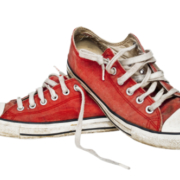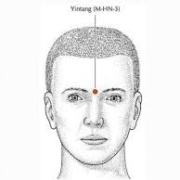How the Shoes You Wear Can Wreck Your Spine
If you’ve been experiencing lower back pain and can’t seem to pinpoint the cause, try looking down – at your feet. What kind of shoes are you wearing? Your shoes can have a tremendous effect on your spine, causing back pain. While this is traditionally considered to be a “female issue,” some men’s shoe styles are unsafe as well. Take a look at the most common culprits and find out how you can be safely shod.
The Truth About High Heels
Wearing high heels puts your body in a position that is very similar to walking on a ramp. It causes your calf muscles to stay in a constantly flexed position and increases fatigue throughout the lower body. What’s worse, though, is that high heels cause your entire posture to change, they:
- Thrust your chest forward
- Push your lower back forward
- Tilt your pelvis up so the spine and hips are out of alignment
- Put excessive pressure on the knees
- Tendons get thicker and calf muscles get shorter
- Shift your weight to the balls of your feet with increased downward force pressure
- Extended regular wear can actually cause your anatomy to change
Wearing high heels for even a few hours can cause lower back pain. Wearing them on a regular basis can have a detrimental effect on your body. This does not even take into account the increased risk of falls and twisted ankles.
Why Flip Flops are a Flop
Flip flops are a popular summer shoe. They are easy to slip on and take off, they’re cool, and fairly comfortable. Most even stand up to getting wet without damage. However, you may be sacrificing your safety and spine health for choosing these easy to wear shoes.
The biggest problem is, they do not offer any ankle or foot support – none at all. The cushioning is minimal at best and they aren’t really secure on your foot. All of this leaves you vulnerable to trips and falls – a leading cause of injury and death in the United States. It also leaves you vulnerable to back pain and spinal injury.
There are several problems with wearing flip flops, especially on a regular basis:
- You have to unnaturally shorten your stride
- You have to curl or pinch your toes to keep your shoes on while you walk
- Your foot contacts the ground in an unnatural way that causes your leg to rotate slightly
All of these things put pressure on your spine, causing unusual strain on your hips, knees, feet, and lower back. It can cause muscular pain and strain, but it can also cause a misalignment of your spine.
So, are Flat Shoes Better?
When compared to high heels, flat shoes are much better, especially when it comes to posture. Flats keep your spine pretty straight and your calf muscles are relaxed. They also help to distribute your body weight more evenly through your whole foot as opposed to pushing it to the balls of the feet. However, not all flat shoes are created equal. For instance, flip flops are flat, but we know that they are bad for your body, so be careful when choosing your flat footwear.
10 Tips for Spine Friendly Shoes
Keep these tips in mind when looking for back friendly shoes:
- Throughout the course of the day your foot naturally expands. Go shoe shopping in the afternoon to get a more accurate fit.
- Get your feet measured every time you buy shoes.
- Always try on new shoes, walk around in them and stand.
- When determining length and width, do it while standing.
- Look for shoes that provide foot support and have an arch support.
- Don’t get shoes that are too wide or too narrow – or too long or short.
- Look at both size and width. Going up a half a size may not necessarily mean a shoe is wide enough if the shoes you are trying on pinch.
- Speaking of size, let it be a guide, not a rule. Gauge your shoe size by your comfort, not a number.
- Feel the insides of the shoes, along the heel and down to the toe to make sure that there are not seams, tags, or anything else that will affect your comfort or rub your foot.
- Check the shoe for sturdiness and soundness. Is the sole thick? Does the sole adhere well to the shoe (no gaps or loose spots)? Is the shoe made from durable, quality material?
Shoes are not accessories, they are tools that help protect much more than just your feet. Wear them well.
For more health and wellness information visit www.ocwc.ca


